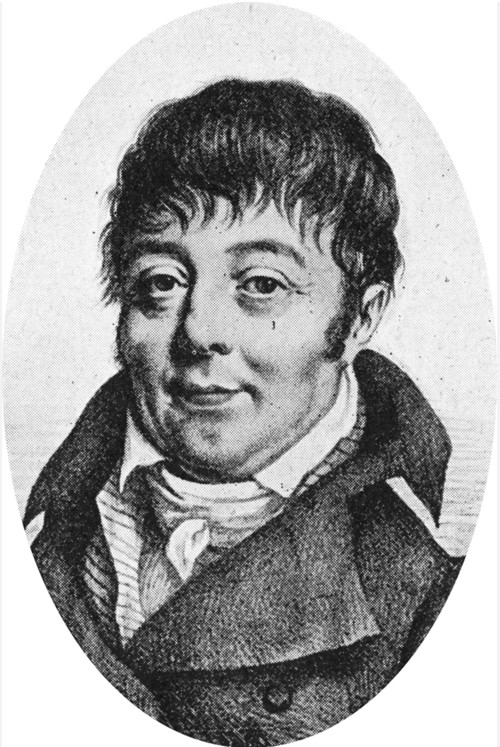Jacques-Julien Houtou de Labillardière (1755–1834)
Jacques Labillardière was born in Alençon, Normandy, France on 28 October 1755. Labillardière attended the Collège Royal d’Alençon, where he excelled in his studies. He matriculated at the University of Montpellier in about 1772, studying medicine under Antoine Gouan. He did not graduate from Montpellier, instead he transferred to Reims University. After graduating in 1779, he moved to Paris, where he spent much his time at the Jardin du Roi. Having decided to pursue his interest in natural history, rather than a medical career, he took up an opportunity to collect specimens for Louis Guillaume Le Monnier.
Labillardière undertook his first voyage as a naturalist in 1783. He was sent to Britain by Le Monnier to study the exotic plants in cultivation there. He stayed there almost two years and during that time he established friendships with Sir Joseph Banks, James Edward Smith, Aylmer Bourke Lambert and George Williams. On returning to France, Labillardière immediately set out on an expedition through the French Alps. Labillardière’s early voyages and expeditions seem to have fired in him a passion for exploring foreign lands, for on his return to Paris he immediately began making plans for a voyage to the Near East, in order to study the plants described by physicians of the Islamic Golden Age. He again secured Le Monnier’s sponsorship, and Le Monnier in turn secured the support of France’s foreign minister Charles Gravier, comte de Vergennes, rendering Labillardière’s voyage virtually an official mission.
In 1791 Labillardière was appointed as a naturalist to Bruni d’Entrecasteaux’s expedition to Oceania in search of the lost ships of Jean-François de Galaup, comte de La Pérouse. D’Entrecasteaux failed to find any trace of the missing expedition, but his ships visited southwest Australia; Tasmania; the North Island of New Zealand; and the East Indies. It was from these locations that Labillardière, Claude Riche, Étienne Pierre Ventenat, assisted by gardener Félix Delahaye, collected zoological, botanical and geological specimens, and described the customs and languages of the local indigenous people.
Labillardière returned to France with his collections in 1796. Between 1804 and 1807, he published Novae Hollandiae Plantarum Specimen, the first general description of the flora of Australia. Amongst the notable plants detailed in his work on Australia are the first descriptions of the iconic carnivorous plants, Cephalotus follicularis, Drosera binata, D. spatulata and Utricularia dichotoma.
Labillardière is commemorated in over a hundred published plant names, the most prestigious of which is the Australian endemic genus Billardiera.
For more information on the life of Jacques-Julien Houtou de Labillardière please see Wikipedia.
The ICPS claims no copyright on the content of this page. Please see the list of sources used for the pages on key historical figures in the study of carnivorous plants.

Novae Hollandiae Plantarum Specimen.

Jacques-Julien Houtou de Labillardière. Sketch by Julien Leopold Boilly, lithographer unknown. The original lithograph is in the Wellcome Library, London.
